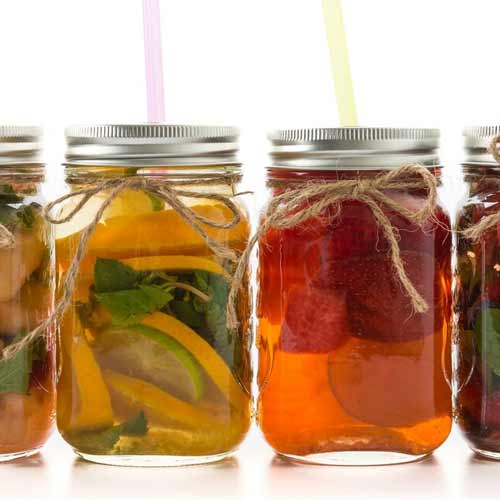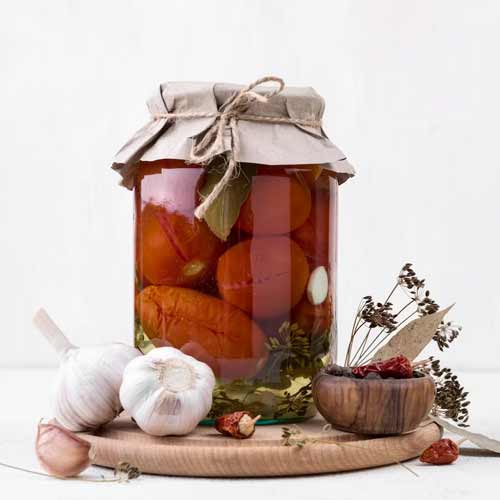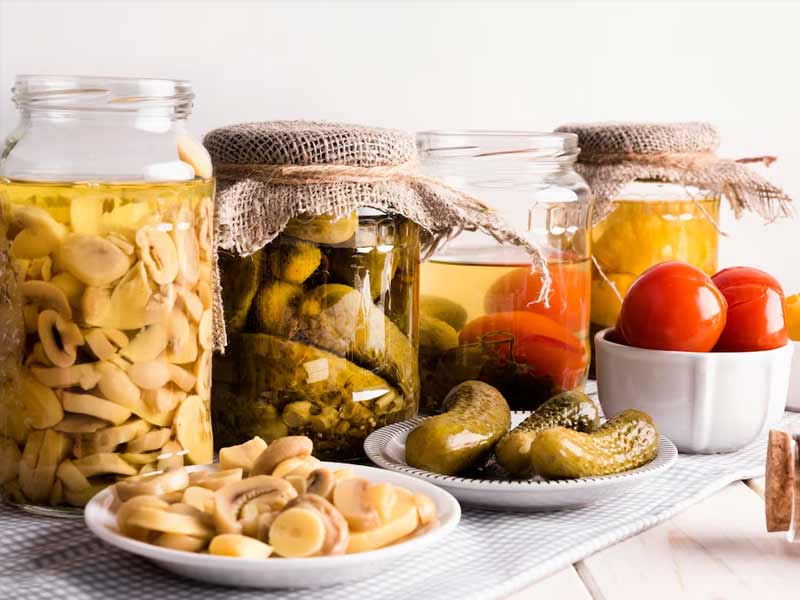Here is Canning Method for Soups, Sauces, and Stocks. Homemade soups, sauces, and stocks are culinary treasures, packed with flavors and nutrients. Canning them allows you to preserve these delicious creations for future use, ensuring that your meals are always bursting with homemade goodness. In this article, we will guide you through the art of canning soups, sauces, and stocks, providing step-by-step instructions and helpful tips to help you enjoy the convenience and taste of your homemade creations all year round.
Benefits of Canning Soups, Sauces, and Stocks

Canning your own soups, sauces, and stocks offers several advantages:
- Convenience: Having homemade, ready-to-use soups, sauces, and stocks on hand saves time and effort when preparing meals.
- Flavor Preservation: Canning locks in the fresh flavors of your homemade creations, allowing you to enjoy them long after the ingredients are out of season. You can Learn Benefits of Canning.
- Control Over Ingredients: By canning your own creations, you have control over the quality and selection of ingredients, avoiding preservatives and additives found in store-bought options. You can learn Home Canning Chicken.
- Cost Savings: Canning allows you to take advantage of seasonal produce and bulk purchases, saving money in the long run.
Equipment and Supplies Needed

To embark on your canning journey, gather the following equipment and supplies (Canning Method for Soups, Sauces, and Stocks):
- Canning jars with lids and bands
- Pressure canner or water bath canner (depending on the acidity level of your recipe)
- Canning rack or jar lifter
- Canning funnel
- Bubble remover and headspace tool
- Magnetic lid lifter
- Kitchen timer
- Cutting board and knife
- Large pot for preparing soups, sauces, or stocks
- Clean kitchen towels or paper towels
Selecting and Preparing Ingredients

When it comes to canning soups, sauces, and stocks, it is essential to start with high-quality ingredients. You can learn Troubleshooting Canning. Follow these steps:
- Choose fresh and ripe produce for soups and sauces. Opt for organic ingredients whenever possible.
- Select meat, poultry, or vegetables that are free from blemishes or signs of spoilage for stocks.
- Wash and prep all ingredients thoroughly, removing dirt, stems, and any damaged portions.
- Chop vegetables and meats into uniform sizes to ensure even cooking and distribution of flavors.
Canning Methods: Pressure Canning and Water Bath Canning
The choice of canning method depends on the acidity level of your recipe (Canning Method for Soups, Sauces, and Stocks):
- Pressure Canning: Use a pressure canner for low-acid soups, sauces, and stocks. The high temperature reached during pressure canning eliminates bacteria and ensures safety.
- Water Bath Canning: High-acid recipes can be safely canned using a water bath canner. This method involves submerging filled jars in boiling water for the prescribed time to destroy any potential microorganisms.
Step-by-Step Canning Process (Canning Method for Soups, Sauces, and Stocks)

- Prepare your canning jars, lids, and bands by washing them in hot, soapy water. Rinse them thoroughly.
- Fill a large pot with water and bring it to a boil. Submerge the jars in the boiling water and let them sterilize for a few minutes.
- Prepare your soup, sauce, or stock according to your favorite recipe, ensuring it is hot.
- Remove the sterilized jars from the boiling water using a jar lifter, emptying the water from each jar.
- Carefully fill each jar with your hot soup, sauce, or stock, leaving the recommended headspace mentioned in the recipe.
- Remove any air bubbles by running a bubble remover or headspace tool along the inside of the jar.
- Wipe the jar rims with a clean, damp cloth to remove any residue. Place a lid on each jar and secure it with a band, ensuring it is fingertip tight. You can learn Storing Canned Food.
- For pressure canning, follow the instructions provided by the manufacturer for your specific canner. Process the jars for the recommended time at the appropriate pressure.
- For water bath canning, place the filled and sealed jars back into the canning rack and lower them into the boiling water. Process the jars for the recommended time, starting the timer once the water returns to a boil.
- Once processed, remove the jars from the canner and place them on a towel-lined surface. Allow them to cool undisturbed for 12 to 24 hours. You can learn Steam Canning.
- Check the seals by pressing down on the center of each lid. If it doesn’t flex, the jar is properly sealed. Any unsealed jars should be refrigerated and used promptly.
Storing and Using Canned Soups, Sauces, and Stocks
Proper storage is essential to maintain the quality and safety of your canned creations:
- Store the sealed jars in a cool, dark place away from direct sunlight.
- Label each jar with the contents and the date of canning for easy identification.
- Consume the canned soups, sauces, and stocks within one year for the best flavor and quality.
- When ready to use, check the contents for any signs of spoilage, such as off odors, unusual colors, or bulging lids.
- Use the canned goods in your favorite recipes, such as soups, stews, casseroles, or as a base for flavorful sauces and gravies.
Safety Considerations and Shelf Life
To ensure the safety of your Canning Method for Soups, Sauces, and Stocks, keep these considerations in mind:
- Follow tested and trusted recipes from reputable sources to maintain proper acidity levels and canning procedures.
- Use caution when working with a pressure canner, following the manufacturer’s instructions carefully.
- Discard any jars with signs of spoilage, such as bulging lids, off odors, or mold growth.
- For optimal quality, consume the canned goods within one year. Over time, flavors may deteriorate and textures may change.
Troubleshooting Common Canning Issues
To address common canning problems, follow these tips (Canning Method for Soups, Sauces, and Stocks):
- Ensure the jars and lids are in good condition and free from cracks or chips.
- Double-check that the processing times and pressures specified in the recipe are accurate for your altitude and canning method.
- Follow proper headspace guidelines to prevent liquid loss or overly full jars.
- If jars fail to seal, refrigerate the contents and consume them promptly. You can learn Canning Safety.
Conclusion – Canning Method for Soups, Sauces, and Stocks
Canning soups, sauces, and stocks is a fantastic way to preserve the homemade flavors that make your meals special. By following the step-by-step instructions provided in this guide, you can confidently embark on your canning journey. Enjoy the convenience of having delicious, homemade creations at your fingertips, ready to enhance your favorite recipes with a burst of flavorand nourishment. You can learn Types of Canning.
Canning soups, sauces, and stocks not only allows you to preserve the essence of your culinary creations but also provides you with the flexibility to enjoy them whenever you desire. So gather your ingredients, prepare your equipment, and embark on this delightful adventure of canning. With each jar you seal, you’re capturing a piece of homemade goodness that will enhance your meals and bring joy to your table. You can learn Canning Hacks.
FAQs (Frequently Asked Questions) – Canning Method for Soups, Sauces, and Stocks
- Can I can soup and sauces with dairy or cream-based ingredients?
- It is not recommended to can soups or sauces with dairy or cream-based ingredients, as they can separate or become unsafe to consume. Consider adding these ingredients when you are ready to serve the dish.
- Can I adjust the seasoning or spice levels in my canned soups and sauces?
- Yes, you can customize the flavors of your canned soups and sauces to suit your taste preferences. However, be cautious with adjusting acidity levels, as they play a crucial role in ensuring the safety of the canned goods.
- How long can I store canned soups, sauces, and stocks?
- When properly canned and stored in optimal conditions, soups, sauces, and stocks can be safely consumed for up to a year. However, for the best flavor and quality, it is advisable to use them within the first year.
- What are some creative ways to use canned soups, sauces, and stocks?
- Canned soups, sauces, and stocks are versatile ingredients that can be used in various recipes. They can serve as the base for hearty soups, flavorful sauces, or enhance the taste of stews, casseroles, and pasta dishes. Let your creativity shine and experiment with new recipes using your canned creations.
- Can I reuse canning lids?
- It is not recommended to reuse canning lids as they may not provide a proper seal. For each canning session, it is advisable to use new lids to ensure the safety and quality of the preserved food.
In conclusion, canning soups, sauces, and stocks is a gratifying and practical way to preserve the flavors of your homemade creations. With proper techniques and attention to safety guidelines, you can savor the convenience and taste of your homemade goodness throughout the year. So, embrace the art of canning and unlock a world of culinary possibilities that will elevate your meals to new heights. You can learn History of Canning.
We proudly present: 1TouchFood, a website specifically designed for online cooking education. Our platform offers a diverse range of culinary tutorials, aimed at teaching aspiring chefs and cooking enthusiasts the art of cooking from the comfort of their own homes. Whether you’re a beginner or an experienced cook looking to expand your culinary repertoire, 1TouchFood provides step-by-step video lessons, interactive recipes, and expert tips to enhance your cooking skills.
Our dedicated team of professional chefs and culinary experts have meticulously crafted each lesson to ensure a seamless and immersive learning experience. Join us on 1TouchFood and unlock your potential in the kitchen as you embark on a culinary journey filled with flavors, techniques, and newfound inspiration.
Please follow us on linkedin. You can learn all best canadian food recipes you can check our Culinary 1TouchFood Youtube and Telegram 1TouchFood page. Don’t forget Fighting Obesity Magazine and Radio Cooking.

